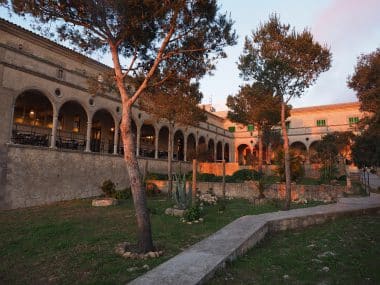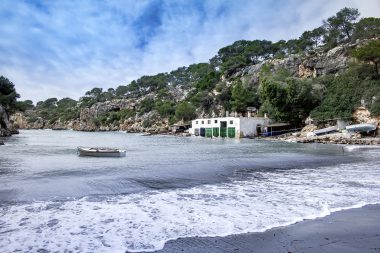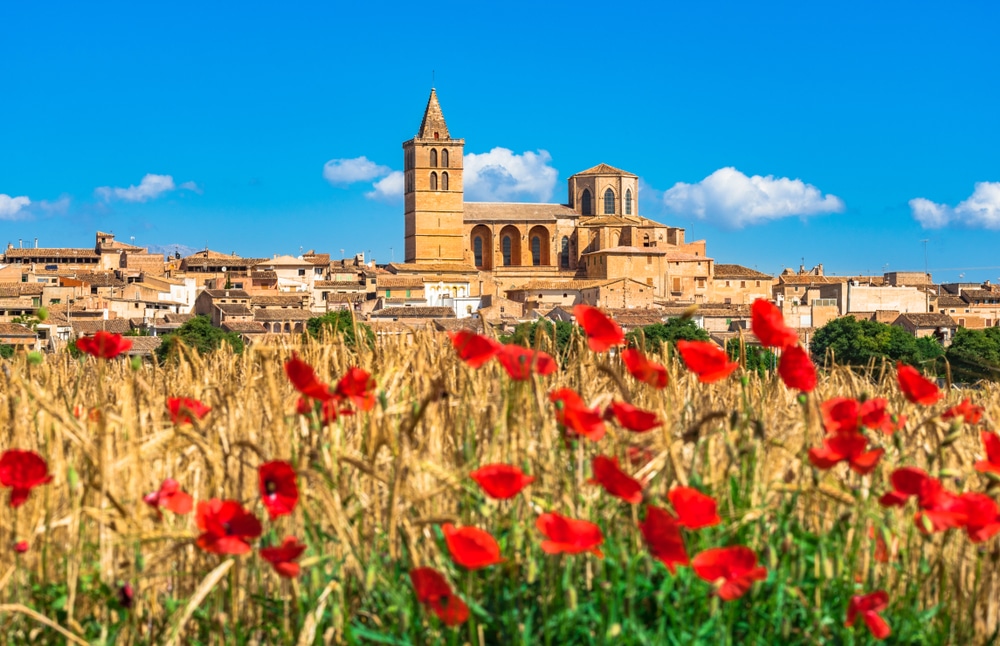Gentle hills, fertile plains and entire fields that turn into a fragrant, white-pink sea of flowers in spring. Thousands of red flowers form impressionistic dots between the green of the olive groves and the delicate pink of the almond trees. The centre of Mallorca is famous for its poppy splendour.
Nowhere else do poppies grow as abundantly in the fields as in this region. Es Pla is the name of the plain in the centre of the island – away from the crowds of tourists. Mallorcan everyday life is still lived here. Mallorca’s centre of the island is an unvarnished beauty with sleepy towns and noteworthy sights.
Mallorca’s granary – so mysterious and original
Because of its great agricultural importance, the region of the middle is also called the “breadbasket of Mallorca”. After a brief economic crisis in the 1970s, the area has developed magnificently with organic farming, crafts and viticulture.
In Bodegas near Petra and in Algaida, excellent wines are pressed. Let’s not kid ourselves. The times of the 50s and 70s are long gone and the interior of the island, like the other regions of Mallorca, is excellently developed. And yet the centre of the island has this special Mallorcan charm.
In addition to excellent country roads, carefully signposted hiking trails, perfectly equipped hotels and fincas, there are still the enchanting little escapes, the dreamy squares with quaint pubs and places without traffic – lonely fields where cattle graze between the trees and windmills with which the farm workers once pumped up the water. Today, most of the mills are no longer used for pumping water. However, they decorate the landscape even without any function – they are simply beautiful.
And there is something else that makes the centre of the island so attractive: its location between the mountain ranges of the Serra de Tramuntana in the northwest and the Serra de Llevant in the east.
Tip: A hiking trip to the Castell d’Alaró is worthwhile. Regardless of the perspective, the location and the view over the fertile plain of Es Plá create a magical atmosphere.
In search of lost time: the most beautiful places in the centre of Mallorca
The longer you stay inland, the more you forget that Mallorca is an island. The leisurely way of life in the villages is reminiscent of times long past.
Algaida

Algaida surprises with an impressive silhouette. Instead of high-rise towers, 20 windmills dominate the skyline of the charming little town. The Mallorcans particularly appreciate two things in their town. On the one hand, they are proud of their pretty Renaissance church of Sant Pere i Sant Pau, and on the other hand, they are proud of the many restaurants with good Mallorcan cuisine. Algaida is rightly called the “food town”. An oldie among the inns is “Cal Dimoni”. Rustic, huge and extremely Mallorcan – the guests are thrilled.
Inca
Inca may not be an architectural beauty. Here and there, the town still seems a bit frayed. However, a lot has happened in recent years. The centre of Inca inspires with a pretty pedestrian zone, some chic bars and green squares. Since the Catalan conquest, Inca has been the centre of the shoemakers’ guild. A visit to the weekly market is worthwhile. Here you will find a large selection of handbags, shoes and belts.
Petra
In the village of Petra, things are also tranquil. The checkerboard-like alleys of the sleepy village are a wonderful eye-catcher. Just a few kilometres away, on the Puig de Bonany, is the sanctuary of Santuari de la Mare. The origins of the monastery date back to the 17th century. From the small monastery mountain there is a great view.
Sineu
The most famous of all the island villages is Sineu. The small town of Talayotic-Roman origin is located almost exactly in the geographical center of the island. King Jaume II made Sineu his residence in the 13th century. In 1306 he granted the community market rights. To this day, farmers from the surrounding area come week after week and offer their goods for sale. Tourists and locals alike flock to the famous weekly market, which is one of the most beautiful on the island. In Sineu, the “big clucking in the centre of the island” takes place. During the market, there is a lively hustle and bustle everywhere in the alleys. Street musicians also enliven the scenery.

Llucmajor stands out as a place steeped in history. In 1349, the last Mallorcan king Jaume III was killed here by the troops of his cousin Pedro IV of Aragon. As a result, Mallorca lost its independence.
Tip: Somewhat hidden, in a corner of the large town square, Café Arábic has been around since 1994. From the terraces, in a cozy atmosphere, guests enjoy Mallorcan dishes – simple, simple and delicious.
Mallorca, Part 1: Palma and the southwest coast
Mallorca, Part 2: In the northwest of Mallorca
Mallorca, Part 3: The North of Mallorca
Mallorca, Part 4: The Southeast of Mallorca
Können wir Ihnen helfen?
Benötigen Sie Unterstützung bei Ihrer Reiseplanung oder weitergehende Informationen zu einzelnen Reisezielen? Wir freuen uns über Ihre Kontaktaufnahme.


